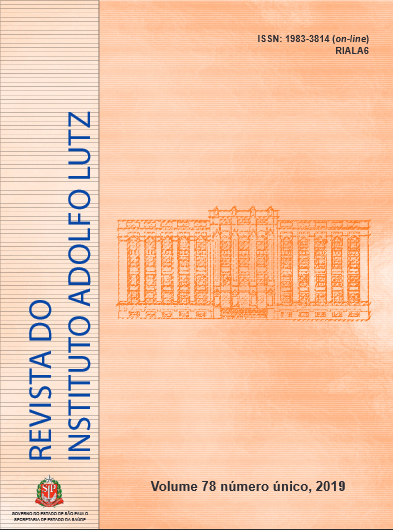Resumen
This study identified the modal salient behavior, the normative and the control modal beliefs on the nutritional label use for the prepackaged food products among the college students. In November 2015, the exploratory qualitative research was conducted with 19 nutrition students, applying the concepts of Theory of Planned Behavior. Contents analysis of two organized focus groups and the statistical descriptive analysis of quantitative variables were performed. Both focus groups mentioned the advantages of the use of nutritional information, as the assistance for choosing the healthy food. A specific disadvantage associated with the mentioned nutritional claims was this influence on the purchase decisions (behavioral beliefs). The students mentioned their parents and siblings as the peoples who approve the use of this information, when they purchase a product (normative beliefs). Small lettering and difficulty to interpret the portions size indicated in the nutritional information on the labels were the factors, which could difficult their use. Making easy to read the nutritional claims tend to stimulate the purchasing decisions (control beliefs). Eleven salient modal beliefs were identified, which may explain participants’ behavior when using information and nutrition claims.
Citas
1. World Health Organization - WHO. Food and Agriculture Organization of the United Nations - FAO. Food labelling. 5.ed, Rome: WHO/FAO; 2007. Available in: http://www.fao.org/docrep/010/a1390e/a1390e00.htm
2. Temple NJ, Fraser J. Food labels: a critical assessment. Nutrition. 2014, 30(3):257-60. https://doi.org/10.1016/j.nut.2013.06.012
3. Hawkes C. Nutrition labels and health claims: the global regulatory environment. Genebra: World Health Organization; 2004. Available in: http://apps.who.int/iris/bitstream/10665/42964/1/9241591714.pdf
4. Christoph MJ, An R, Ellison B. Correlates of nutrition label use among college students and young adults: a review. Public Health Nutr.
2016;19(12):2135-48. https://doi.org/10.1017/S1368980015003183
5. Fishbein M, Ajzen I. Predicting and changing behavior: the reasoned action approach. 1.ed New York: Psychology Press. Taylor & Francis group; 2010. https://doi.org/10.4324/9780203838020
6. Conner M, Sparks P. Theory of Planned Behaviour and Health Behaviour. In: Conner M, Norman P, editors. Predicting Health Behaviour. 2.ed. New York: Open University Press; 2005. p. 170-222. Available in: https://soh.iums.ac.ir/uploads/32_282_44_13.pdf
7. Kitzinger J. Focus groups with users and providers of health care. In: Pope C, Mays N, editors. Qualitative Research in Health Care. 2.ed. London: BMJ Books; 2000. p. 20-29.
8. Brazilian Market Research Association. Brazilian Economic Classification Criteria. 2015 and social class distribution update for 2016. Available in: www.abep.org/Servicos/Download.aspx?id=13
9. Gagné C, Godin G. Les théories sociales cognitives: guide pour la mesure des variables et le développement de questionnaire. Québec: Bibliothèque Nationale. 1999. Available in: https://pdfs.semanticscholar.org/0e2b/2f92f199f9f693fb7b0bde04c80856ca90e.pdf
10. Besler HT, Buyuktuncer Z, Uyar MF. Consumer understanding and use of food and nutrition
labeling in Turkey. J Nutr Educ Behav. 2012;44(6):584-91. https://doi.org/10.1016/j. jneb.2012.01.005
11. Cooke R, Papadaki A. Nutrition label use mediates the positive relationship between nutrition knowledge and attitudes towards healthy eating with dietary quality among university students in the UK. Appetite. 2014;83:297-303. https://doi.org/10.1016/j.appet.2014.08.039
12. Wahlich C, Gardner B, McGowan L. How, when and why do young women use nutrition information on food labels? A qualitative analysis. Psychol Health. 2013;28(2):202-216. https://doi.org/10.1080/08870446.2012.716439
13. Miller LM, Cassady DL. The effects of nutrition knowledge on food label use. A review of the literature. Appetite. 2015;92:207-16. https://doi.org/10.1016/j.appet.2015.05.029
14. Hodgkins CE, Raats MM, Fife-Schaw C, Peacock M, Gröppel-Klein A, Koenigstorfer J et al. Guiding healthier food choice: systematic comparison of four front-ofpack labelling systems and their effect on judgements of product healthiness. Br J Nutr.2015;113(10):1652-63. https://doi.org/10.1017/S0007114515000264
15. Lim HJ, Kim MJ, Kim KW. Factors associated with nutrition label use among female college students applying the theor y of planned behavior. Nutr Res Pract. 2015;9(1):63-70. https://doi.org/10.4162/nrp.2015.9.1.63

Esta obra está bajo una licencia internacional Creative Commons Atribución 4.0.
Derechos de autor 2019 Revista del Instituto Adolfo Lutz
